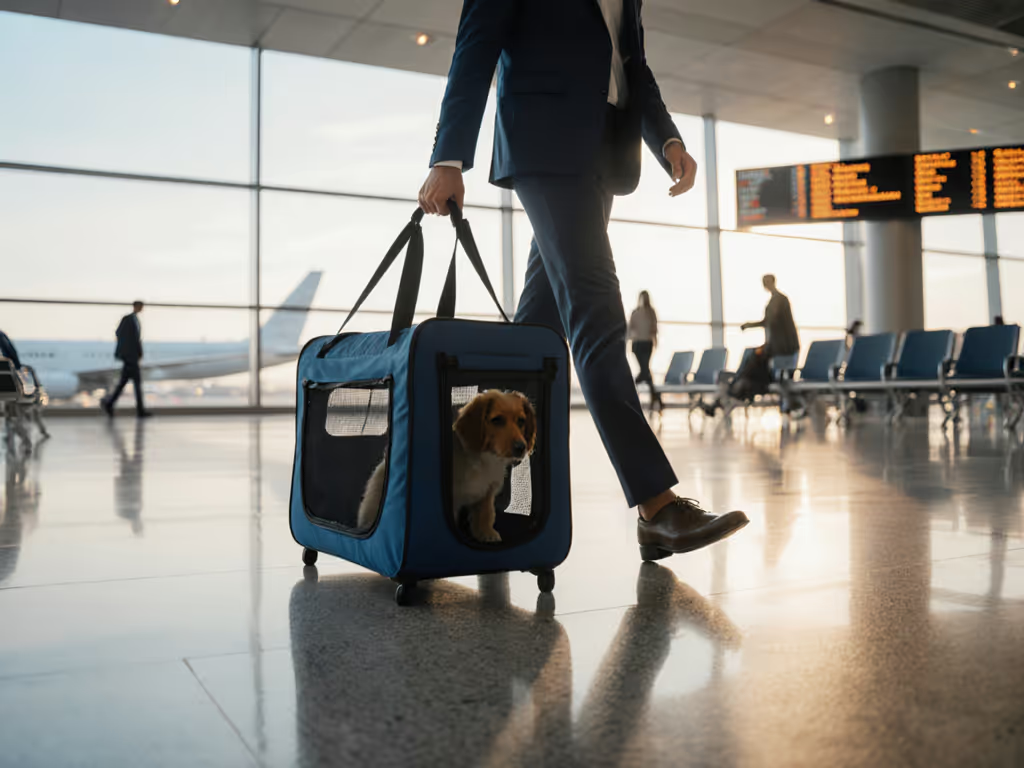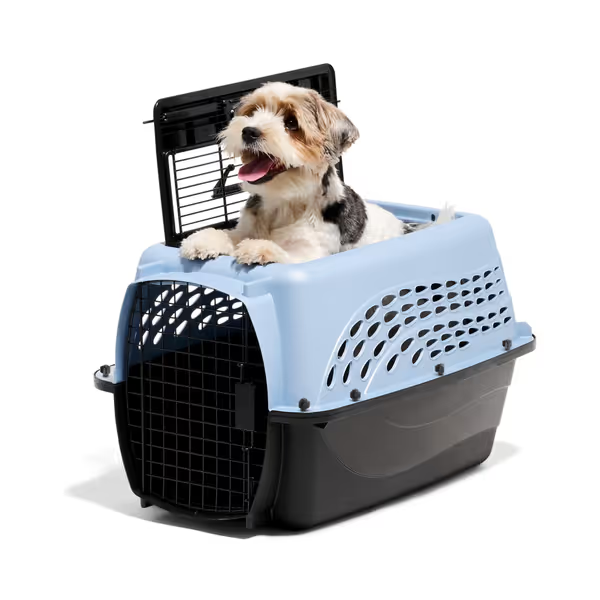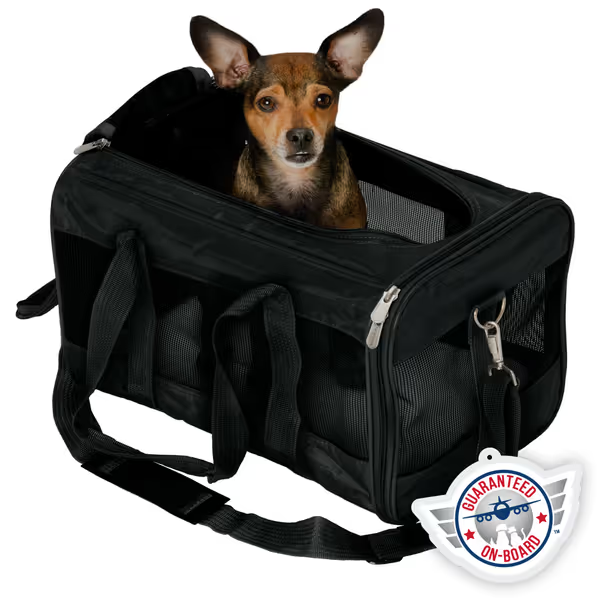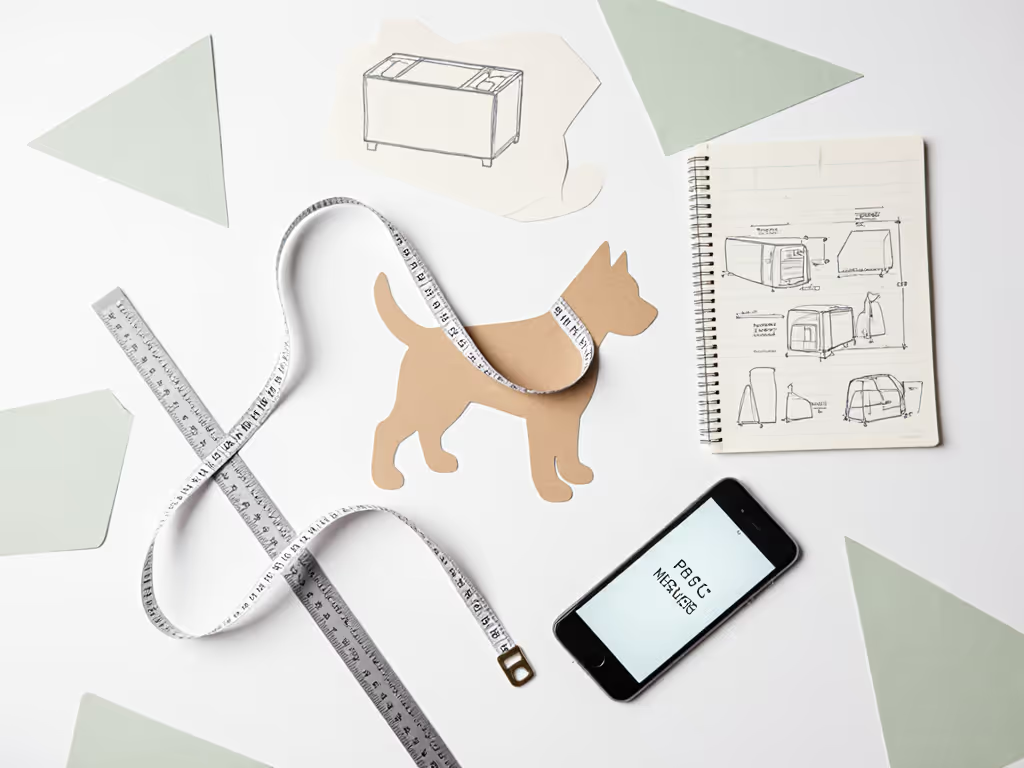
Stress-Free IATA Pet Carrier Guide: Global Regulations Compared

When planning international travel with your pet, understanding the International Air Transport Association pet carrier requirements is essential for a smooth journey. As someone who's helped hundreds of pet parents navigate the complex world of travel pet carriers, I've seen how easily confusion about regulations can turn a dream vacation into a stressful ordeal. Calm begins long before you zip the door; true comfort starts with selecting the right carrier that aligns with both global standards and your pet's unique temperament. In this guide, I'll help you decode the patchwork of international pet travel requirements so you can confidently choose a carrier that meets all regulations while respecting your pet's emotional needs. A carrier should lower arousal, not contain it by force, and that principle guides everything from regulatory compliance to the acclimation process.
Understanding IATA Requirements for Pet Travel
The International Air Transport Association (IATA) sets the global standard for safe pet transportation through its Live Animal Regulations (LAR). While airlines may have additional restrictions, IATA compliance is the universal baseline you must meet. These regulations ensure pets have adequate space, ventilation, and security during transit.
Key IATA Carrier Specifications
- Ventilation: Minimum 16% ventilation on at least three sides
- Size requirements: Pets must stand, turn around, and lie down comfortably without touching sides
- Construction: Must be escape-proof with secure latches (spring-loaded pins extending at least 1.6cm beyond framework)
- Material: Rigid plastic, fiberglass, metal, or solid wood (welded wire crates aren't accepted)
What many don't realize is that IATA specifications serve dual purposes: they protect pets from physical harm while also reducing sensory overload. The right ventilation pattern, for example, isn't just about airflow; it minimizes visual chaos that can trigger panic. I recall working with a shepherd mix who would "pancake" at the sight of her carrier, only after we detached the base and built micro-sessions around dinner time did she transform her relationship with the very same carrier that once triggered panic.
Hard vs. Soft-Sided Carriers
The IATA-approved category includes both hard-sided plastic kennels and soft-sided carriers, but each has specific requirements:
- Hard-sided: Most common for cargo travel; must have permanent identification, food/water dishes, and absorbent bedding
- Soft-sided: Generally permitted for cabin travel only; must have rigid flooring and sufficient structural integrity
Regardless of type, your carrier must meet IATA's "stocking density" standards, ensuring your pet has enough room to move naturally without excessive space that could cause injury during turbulence.
Regional Regulations Comparison
While IATA provides the global foundation, each country adds its own layer of requirements. Understanding these nuances prevents last-minute surprises at the airport.
EU Pet Carrier Regulations
European Union regulations distinguish between commercial and non-commercial pet movements. For non-commercial travel within the EU, pets need:
- Valid EU pet passport
- Microchip matching the passport
- Current rabies vaccination
- Tapeworm treatment for entry to UK, Finland, Ireland, Malta, and Norway
For pets traveling from outside the EU, additional health certificates and waiting periods apply. The EU mandates specific carrier dimensions based on pet weight rather than breed, which particularly affects brachycephalic breeds that often require one size larger than standard calculations suggest.
North American Regulations
United States and Canada have similar but not identical requirements. Both require:
- Health certificate issued within 10 days of travel
- Rabies vaccination (often with specific waiting periods)
However, the U.S. has no federal regulation for in-cabin pet carriers, leaving specifications to individual airlines, leading to frustrating inconsistencies. Canada requires all carriers to meet IATA standards regardless of travel class. Both countries have weather embargoes that restrict certain breeds during extreme temperatures.
Other Key Regions
- Australia: Strict quarantine requirements with carriers needing to meet Australian Standards AS 4766
- Japan: Requires specific carrier dimensions with additional ventilation requirements
- UK: Post-Brexit regulations now align more closely with EU standards but with additional paperwork
Travelers often overlook that even within a single country, requirements can vary by airline and aircraft model. What fits under the seat on a Boeing 737 might not on an Airbus A320, making pre-flight verification crucial.
Choosing the Right Carrier for Your Pet's Temperament
Beyond regulatory compliance, the right carrier must match your pet's emotional needs. This is where many pet parents get stuck, they select based solely on size charts without considering how their pet experiences confinement.
Matching Carrier Features to Temperament
match the carrier to the nervous system, not just the body.
A carrier that technically fits your pet's measurements but triggers anxiety is functionally too small.
For anxious pets: Look for carriers with removable privacy panels that reduce visual stimulation. The gradual introduction of these panels during acclimation prevents sensory overload.
For escape artists: Prioritize carriers with double-locking zippers and reinforced seams. The Petmate Two-Door Plastic Kennel offers steel doors with squeeze latches that provide secure containment while maintaining visibility.

Petmate Two-Door Plastic Pet Kennel (24", Blue)
For motion-sensitive pets: Consider carriers with rigid bases that minimize shifting during transport. The Sherpa Original Deluxe's patented spring wire frame allows the rear to compress for under-seat fit while maintaining stability during turbulence.

Sherpa Original Deluxe Travel Pet Carrier
Measuring for Success
Standard size charts fail pets with unique proportions, long-backed dachshunds, broad-chested French Bulldogs, or tall Maine Coon cats. Instead of relying solely on weight charts:
- Measure your pet standing (height at withers)
- Measure length from nose to base of tail
- Add 4-6 inches to length for comfortable turning
- Measure girth at widest point (usually chest)
For pets who curl when anxious, measure their curled posture too. This "living measurement" approach prevents choosing a carrier that technically meets IATA requirements but causes your pet to feel cramped during actual travel.
Actionable Preparation Steps
Regulatory compliance gets you to the airport; proper preparation ensures you board successfully. Follow this graduated exposure timeline to build positive associations:
4-Week Acclimation Timeline
- Week 1: Place carrier in living area with door open and treats inside
- Week 2: Feed meals near carrier, gradually moving bowl inside
- Week 3: Zip door briefly while pet eats, adding duration daily
- Week 4: Short carrier trips around neighborhood (10-15 minutes)
Use gentle directives during training: "Would you like to see what's inside?" rather than "Get in the carrier!" This pet-first language reduces resistance and builds trust. Track progress with measurable milestones (for example, "Pet enters carrier voluntarily 3x daily") rather than time-based goals.

Your Next Step
Before booking your flight, verify both IATA requirements and your destination's specific regulations. For airline-specific details, see our airline-by-airline carrier requirements including exact size limits and documentation. Contact your airline with your carrier's exact dimensions, not just the size designation, as many reject carriers that technically meet IATA standards due to aircraft-specific limitations.
Create your personalized preparation schedule starting today, not the night before your flight. Print and complete the IATA carrier checklist from your airline's website, then measure your pet using the living measurement technique described. When you've matched the carrier to your pet's nervous system as carefully as you've matched it to regulatory requirements, you'll transform travel from trauma to a manageable experience for both of you.
Remember: the journey to stress-free travel starts with one compassionate step, and it begins long before you zip the door.
Related Articles


EU Pet Carrier Safety: Critical Differences From US Rules

IATA Pet Carrier Requirements by Country

Pass Gate Check: Airline Approved Pet Carrier Specs

